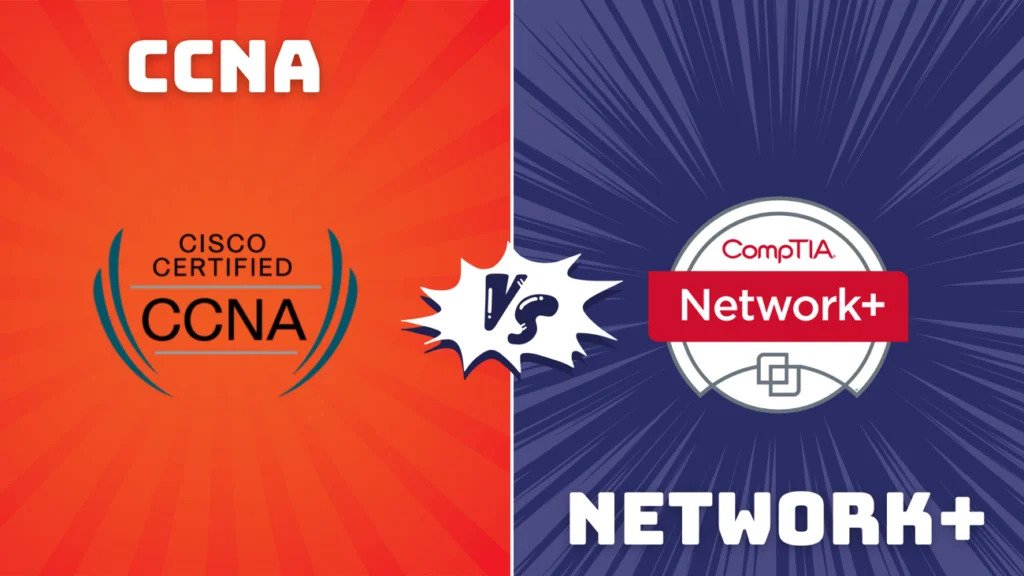In the modern digital era, remote work has become increasingly prevalent and essential for numerous businesses and organizations. Technological advancements now allow employees to work from any location with internet access. Cisco Networking plays a vital role in facilitating remote work by providing the necessary infrastructure and tools for seamless employee connectivity and collaboration.
The Cisco Networking ecosystem encompasses a variety of technologies and solutions that enable communication, data sharing, and collaboration among remote workers. These include virtual private networks (VPNs) and collaboration platforms such as Webex, offering a comprehensive suite of solutions to support remote work environments. As remote work continues to gain popularity, it is crucial for businesses to understand the advantages of utilizing Cisco Networking for remote work, the range of available solutions, implementation strategies, security considerations, and best practices for optimizing Cisco Networking in remote work scenarios.
This article will delve into each of these aspects in detail and present real-world case studies demonstrating successful implementations of Cisco Networking for remote work.
Key Takeaways
- Cisco Networking is essential for remote work as it provides the infrastructure and tools for employees to connect and collaborate from anywhere.
- Using Cisco Networking for remote work increases productivity, flexibility, and cost savings for organizations.
- Cisco offers a range of networking solutions for remote work, including VPN, Webex, and SD-WAN, to ensure seamless connectivity and communication.
- Implementing Cisco Networking for remote work requires careful planning, training, and support to ensure a smooth transition and optimal performance.
- Security considerations for Cisco Networking in remote work include encryption, access control, and threat detection to protect sensitive data and systems from cyber threats.
Benefits of Using Cisco Networking for Remote Work
Cisco Networking for Remote Work: Enhancing Productivity and Security
Cisco Networking provides a secure and reliable connection for remote workers, ensuring access to company resources and collaboration with colleagues without compromising sensitive data. With features like end-to-end encryption and multi-factor authentication, Cisco Networking helps to mitigate the risks associated with remote work, such as data breaches and cyber attacks.
Secure Connection and Collaboration
Cisco Networking offers a range of collaboration tools that enable remote workers to communicate and work together effectively. Tools like Webex provide video conferencing, messaging, and file sharing capabilities, allowing remote teams to stay connected and productive regardless of their physical location. Additionally, Cisco Networking solutions are designed to prioritize voice and video traffic, ensuring high-quality communication even over low-bandwidth connections.
Boosting Productivity and Employee Satisfaction
Using Cisco Networking for remote work can lead to increased productivity, employee satisfaction, and cost savings for businesses. By leveraging the power of Cisco Networking, organizations can create a seamless and secure remote work environment that empowers employees to work efficiently from anywhere in the world.
Benefits for Businesses
By adopting Cisco Networking for remote work, businesses can reap numerous benefits, including increased productivity, improved employee satisfaction, and significant cost savings. With Cisco Networking, organizations can create a secure, reliable, and collaborative remote work environment that drives success in today’s digital age.
Cisco Networking Solutions for Remote Work

Cisco offers a wide range of networking solutions specifically designed to support remote work. One of the key solutions is the Cisco AnyConnect VPN, which provides a secure and encrypted connection for remote workers to access company resources. AnyConnect offers a seamless user experience across devices and operating systems, making it easy for employees to connect to the corporate network from anywhere.
In addition to VPN solutions, Cisco Webex is a powerful collaboration platform that enables remote teams to communicate and collaborate effectively. With features like video conferencing, screen sharing, and messaging, Webex provides a virtual workspace for remote workers to connect and work together in real-time. Furthermore, Cisco Webex Teams offers a secure messaging platform that allows employees to share files, conduct virtual meetings, and collaborate on projects from any location.
Another important networking solution for remote work is Cisco SD-WAN (Software-Defined Wide Area Network), which provides a secure and reliable connection for remote offices and workers. SD-WAN technology optimizes network performance by dynamically routing traffic based on real-time conditions, ensuring that remote workers have a consistent and high-quality connection to company resources. Overall, Cisco Networking offers a comprehensive suite of solutions that cater to the diverse needs of remote work, providing secure connectivity, collaboration tools, and network optimization capabilities.
Strategies for Implementing Cisco Networking for Remote Work
Implementing Cisco Networking for remote work requires careful planning and consideration of various factors. One key strategy is to assess the specific needs of remote workers and the nature of their work to determine the most suitable networking solutions. For example, employees who primarily engage in video conferencing may require high-speed internet connections and prioritized traffic for voice and video communication.
Another important strategy is to ensure that remote workers have access to adequate technical support and training on using Cisco Networking solutions. This may involve providing resources such as user guides, training videos, and helpdesk support to assist employees in setting up and troubleshooting their network connections. Furthermore, businesses should establish clear policies and guidelines for remote work that outline expectations for network security, data privacy, and acceptable use of company resources.
By setting clear boundaries and expectations, businesses can mitigate potential risks associated with remote work and ensure that employees adhere to best practices when using Cisco Networking solutions. Overall, successful implementation of Cisco Networking for remote work requires a strategic approach that takes into account the unique needs of remote workers, provides adequate support and training, and establishes clear policies to ensure security and compliance.
Security Considerations for Cisco Networking in Remote Work
Security is a critical consideration when implementing Cisco Networking for remote work. With employees accessing company resources from various locations and devices, businesses must take proactive measures to protect sensitive data and mitigate security risks. One key security consideration is the use of strong authentication methods such as multi-factor authentication (MFA) to verify the identity of remote workers before granting access to company networks.
Additionally, businesses should implement encryption protocols to secure data in transit over the network, ensuring that sensitive information remains protected from unauthorized access. Cisco Networking solutions like AnyConnect VPN offer robust encryption capabilities to safeguard communication between remote workers and company resources. Furthermore, businesses should regularly update and patch their networking infrastructure to address vulnerabilities and protect against emerging threats.
By staying current with security updates, businesses can strengthen their defenses against potential cyber attacks and ensure the integrity of their network connections. Overall, security considerations are paramount when implementing Cisco Networking for remote work, and businesses must take proactive measures to protect their networks and data from potential threats.
Best Practices for Optimizing Cisco Networking for Remote Work

Optimizing Network Traffic
One best practice is to prioritize voice and video traffic over the network to ensure high-quality communication for remote workers engaging in virtual meetings and collaboration. By prioritizing critical traffic, businesses can minimize latency and packet loss, resulting in a better user experience for remote workers.
Leveraging SD-WAN Technology
Another best practice is to leverage SD-WAN technology to optimize network performance for remote offices and workers. SD-WAN allows businesses to dynamically route traffic based on real-time conditions, ensuring that remote workers have a consistent and reliable connection to company resources regardless of their location.
Proactive Network Monitoring
Furthermore, businesses should regularly monitor and analyze network performance metrics to identify potential bottlenecks or issues that may impact the productivity of remote workers. By proactively monitoring network performance, businesses can address issues promptly and optimize their networking infrastructure to support the needs of remote work. Overall, implementing best practices for optimizing Cisco Networking can help businesses create a robust and reliable network environment that supports the productivity and collaboration of remote workers.
Case Studies: Successful Implementation of Cisco Networking for Remote Work
Several businesses have successfully implemented Cisco Networking solutions to support remote work, resulting in improved productivity, collaboration, and employee satisfaction. For example, Company X, a global technology firm, leveraged Cisco AnyConnect VPN to provide secure connectivity for its remote workforce spread across different countries. By implementing AnyConnect VPN, Company X ensured that its employees could access company resources securely from any location while adhering to strict security protocols.
In another case study, Company Y utilized Cisco Webex as its primary collaboration platform for remote work. With features like video conferencing, messaging, and file sharing, Webex enabled Company Y’s employees to communicate effectively and collaborate on projects regardless of their physical location. As a result, Company Y experienced improved teamwork and productivity among its remote workforce.
Furthermore, Company Z implemented Cisco SD-WAN to optimize network performance for its remote offices and workers. By leveraging SD-WAN technology, Company Z ensured that its employees had a reliable and consistent connection to company resources, resulting in improved efficiency and reduced downtime for remote workers. These case studies demonstrate the effectiveness of Cisco Networking solutions in supporting remote work and enabling businesses to create a seamless and secure environment for their remote workforce.
In conclusion, Cisco Networking plays a crucial role in enabling remote work by providing secure connectivity, collaboration tools, and network optimization capabilities. By leveraging the benefits of Cisco Networking solutions and implementing best practices for security and performance optimization, businesses can create a robust environment that supports the productivity and collaboration of their remote workforce. As demonstrated by real-life case studies, successful implementation of Cisco Networking for remote work can lead to improved efficiency, employee satisfaction, and business success in today’s digital workplace.
If you’re interested in learning more about securing a Cisco network, check out this article for valuable insights and tips on how to protect your network from potential threats. Cisco Networking for Remote Work: Solutions and Strategies is essential for understanding the fundamentals of remote work, and securing your network is a crucial aspect of that.
FAQs
What is Cisco Networking for Remote Work?
Cisco Networking for Remote Work refers to the use of Cisco networking solutions and strategies to enable employees to work remotely. This includes technologies such as VPNs, cloud-based networking, and security measures to ensure a seamless and secure remote work experience.
What are some solutions offered by Cisco for remote work?
Cisco offers a range of solutions for remote work, including VPNs (Virtual Private Networks) for secure access to company resources, cloud-based networking for scalable and flexible connectivity, and collaboration tools such as Webex for virtual meetings and communication.
What are the benefits of using Cisco Networking for Remote Work?
Using Cisco Networking for Remote Work offers benefits such as secure access to company resources from anywhere, improved collaboration and communication through Cisco’s collaboration tools, and the ability to scale and adapt network infrastructure to meet the needs of remote work.
How does Cisco ensure security for remote work?
Cisco ensures security for remote work through features such as encrypted VPN connections, multi-factor authentication, and advanced security measures built into their networking and collaboration solutions. This helps to protect company data and resources from potential security threats.














